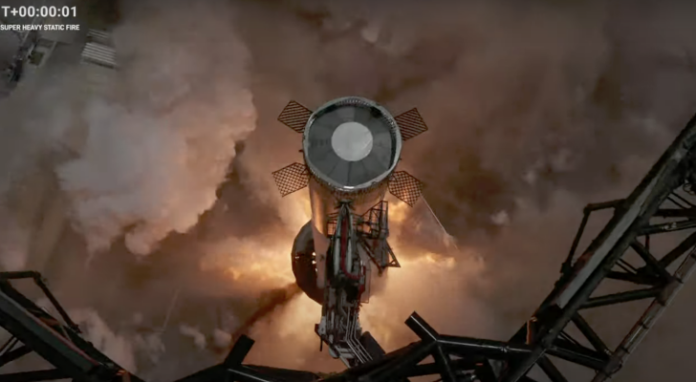
As SpaceX waits for the Forest and Wildlife Services (FWS) to approve its launch pad for the next Starship orbital flight, the firm has already filed an application with the FCC to allow it to communicate with Starship during the test. The filing lists January as the start date for the Starship test campaign, and such filings are a regular affair as SpaceX keeps the window open for operations as it develops the world's largest rocket in Boca Chica, Texas. The second test will feature several upgrades over the one in April, out of which perhaps the biggest will be a hot stage separation that will see the second stage Starship blast off from the first stage while in flight.
Crisp Animation Shows SpaceX's Second Stage Starship Blasting Away From Super Heavy Booster During Test Flight
Starting from the FCC filing, it was recently approved by the FCC and covers a six month time period starting from January 27, 2024. However, as opposed to a filing earlier this year, which was also for the second Starship test flight, this one is limited in nature. The earlier filing, which surfaced in May less than a month after the Starship orbital test flight, had covered the first stage booster, the launch pad, the full Starship vehicle and the second stage.
However, the latest filing only seeks the FCC's authority to communicate with the Starship booster and the launch site. Depending on whether SpaceX has filed other applications with SpaceX, this could mean that the firm is either looking to run Starship tests that are not orbital or it has filed other requests with the FCC to seek clearance for the full vehicle and flight. Out of these, the latter
What hot staging might look like in the future on B9 S25 #SpaceX #b3d #starshiphotstaging @elonmusk #IFT2 pic.twitter.com/oQNGYSqJEW
— TijnM (@m_tijn) September 24, 2023
As we wait, an X user has shared a self made Starship orbital flight render, which might be one of the best of its kind made so far. Starship is not only the world's largest rocket, but it also uses the greatest number of rocket engines on a first stage booster. The rocket is powered by 33 Raptor 2 engines, and when they light up together for a flight, the sight is unlike any offered by other operational or development rockets in the world right now.
At the same time, the second Starship test flight will offer more fireworks. SpaceX will add a hot staging ring to the top of the first stage booster in order to mitigate the stage separation failure that was the main failure point for the April test flight. During the last test, while the rocket managed to clear the pad despite some engines failing, it ended up somersaulting in the air multiple times before the flight termination system took over and it was destroyed.
Apart from the hot staging interstage, SpaceX is also making key upgrades to Starship's engines and the engine bay. SpaceX's Raptor is significantly more complex than the Merlin engines, which fly the Falcon 9 since it redirects all of its gasses back to the combustion chamber to increase performance and efficiency. These high pressure gasses also leave the engine susceptible to leaks, which can prove to be disastrous for a 33 engine system. As a result, as part of upgrades after the April Starship test flight, SpaceX has improved valves and seals on the Raptor engines as well as made the fire suppression system in the engine bay significantly better to handle any accidents.
WccftechContinue reading/original-link]




